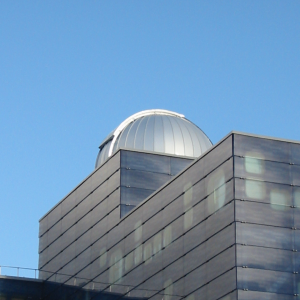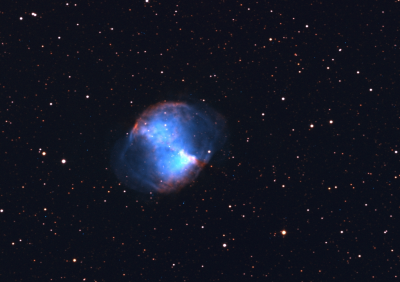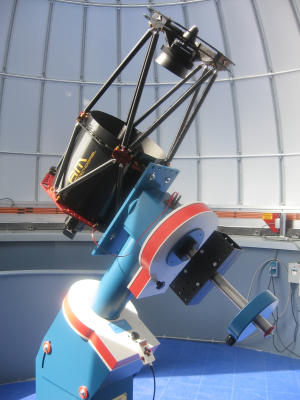Blaauw Sterrenwacht

Sinds 2008 beschikt de Rijksuniversiteit Groningen over een heuse sterrenwacht op het Zerniketerrein: de Blaauw Sterrenwacht. Deze is geplaatst bovenop het nieuwe Bernoulliborg gebouw. Wie over de Zonnelaan richting Zerniketerrein rijdt kan de glimmende koepel al van ver weg zien.
Met de sterrenwacht kunnen studenten ervaring opdoen met het doen van astronomische waarnemingen. Ook kan het publiek van de sterrenwacht genieten. Zo organiseert de Blaauw Sterrenwacht regelmatig publieksavonden.
De sterrenwacht is vernoemd naar de Groningse sterrenkundige Adriaan Blaauw en is op 11 september 2008 officieel door rector magnificus Zwarts geopend.
Studenten aan de slag
De Rijksuniversiteit Groningen is een van de vier plaatsen in Nederland waar sterrenkunde gestudeerd kan worden. Om ervaring op te doen met astronomisch onderzoek reizen jaarlijks studenten uit Groningen naar de Canarische Eilanden. Ze kunnen daar een week lang observaties doen met een professionele telescoop. Om zich hier op voor te bereiden hebben de studenten al practica uitgevoerd met de telescoop van de Blaauw sterrenwacht. Hierdoor hebben ze zelf al ondervonden wat er allemaal komt kijken bij het doen van goed astronomisch onderzoek en kunnen ze goed voorbereid met een grote telescoop aan de slag.
Bezoek de sterrenwacht
Ook het geïnteresseerde publiek kan de sterrenwacht bezoeken. Hier vind je meer informatie over de publieksavonden. Tijdens deze avonden kun je je verwonderen over de schoonheid van het heelal. Heb je dus nog nooit de kraters op de Maan gezien, de ringen van planeet Saturnus of objecten ver in het heelal, kom dan zeker een keer langs! En als het niet helder is, worden er lezingen gehouden over onze plek in het heelal.

De sterrenwacht
De sterrenwacht beschikt over een 40 cm spiegeltelescoop en is van het type Ritchey-Chrétien. Het is een van de grootste telescopen van Nederland. De telescoop beschikt over hoge kwaliteit optiek en is uitermate geschikt voor het fotograferen van objecten diep in het heelal. Fotograferen gebeurt met een speciale digitale camera welke extreem gevoelig is voor zwakke objecten. Aanschaf van de telescoop is mogelijk gemaakt door een subsidie van de Gratama stichting. Meer informatie over de telescoop vind u hier.
De telescoop staat in een koepel van 6,5 meter in doorsnede en heeft ruimte voor 25 mensen. De koepel is geleverd door de firma Ashdome uit de Verenigde Staten. De telescoop kan bestuurd worden vanuit een kleine controlekamer. Ook is er een kleine spectroscoopkamer. Het licht van de telescoop kan met een glasvezel naar deze kamer worden geleid om daar spectra vast te leggen. Studenten kunnen dan de chemische samenstelling van bijvoorbeeld sterren, sterrenstelsels of de zon bepalen.

| Laatst gewijzigd: | 14 oktober 2024 13:14 |
